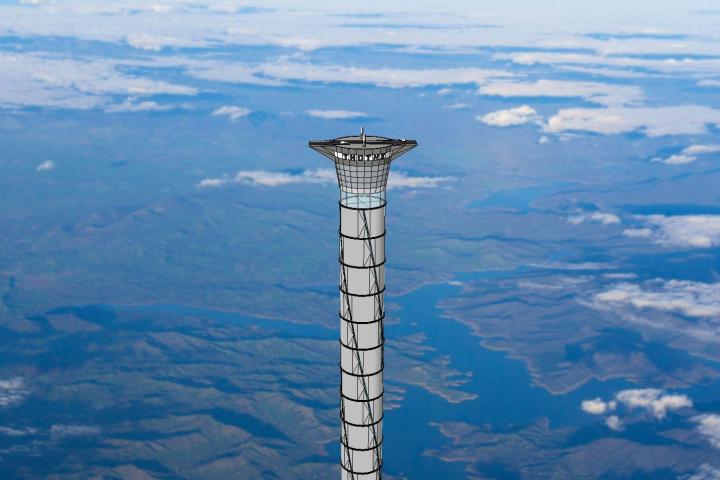
Conceptualized as an independent, free-standing structure reaching 20 km (about 12.5 miles) into the atmosphere, the proposed elevator would allow spacecrafts, satellites, and homo sapiens to be brought past the stratosphere and sent into space. And the craziest part? The massive structure would be made out of inflatable Kevlar cells.
While this may seem like the stuff of science fiction (as many things are these days), inventor Brendan Quine has, at the very least, convinced the patent office to believe in its viability. In a statement, he claimed, “Astronauts would ascend to 20 km by electrical elevator. From the top of the tower, space planes will launch in a single stage to orbit, returning to the top of the tower for refueling and reflight.”

And it’s not just the patent office behind him, either. Quine’s ambitious concept has gained support from a few in the scientific community as well. Professor Arun Misra of McGill University, who serves as the director of the Space Flight Dynamics Lab, is just one of a community of researchers in the International Academy of Astronautics working group studying “theoretical concepts that could travel 10,000 to 100,000 kilometers above the Earth.” And when speaking to the Globe and Mail about the 20 km concept, a mere fraction of the scale he and his team have envisioned, he responded, “One has to start somewhere.”
Of course, there are a few key considerations to be taken into account — for one, Quine and his team will have to find the right material, one that can actually extend miles into the sky without snapping while simultaneously maintaining its structure. The elevator will also have to be stable enough to actually transport materials from Earth’s surface towards the atmosphere, and finally, researchers and engineers will need to find a stable and sufficient power source for the inflatable space elevator.
In any case, many of these questions will soon be answered if and when Thoth successfully completes its smaller prototype, which is slated to be 0.9 miles tall. If this proves successful, he’ll then have the go ahead to really move forward with the full-size version, and perhaps change the landscape of space travel forever.
Editors' Recommendations
- Get out the scrapers: Euclid space telescope is getting deiced
- Check out this gorgeous space station design from Airbus
- Indian space agency has figured out what went wrong with its rocket launch
- Space tourism pioneer Dennis Tito plans moon trip
- Look out, space billboards could be coming to a sky near you


